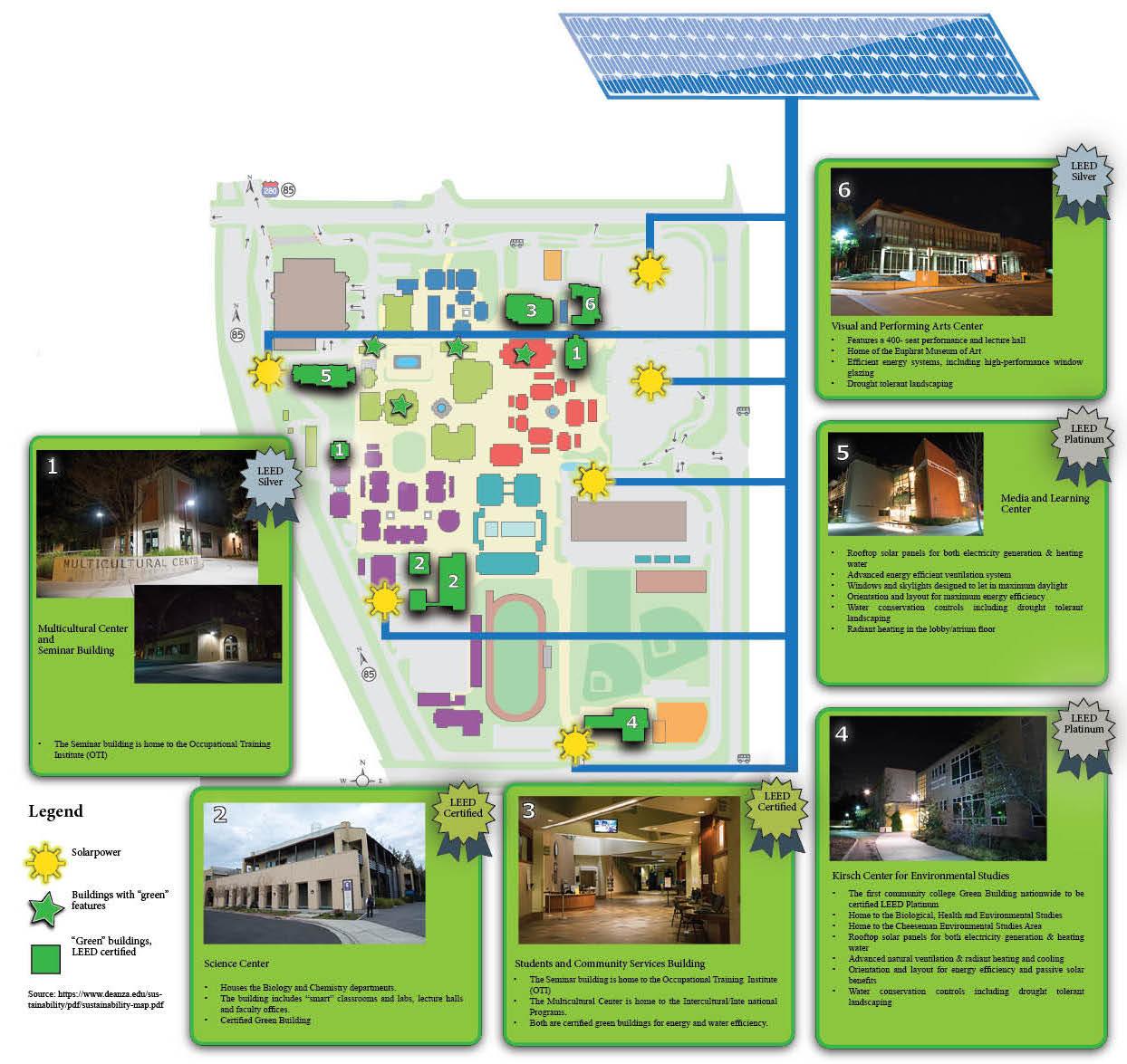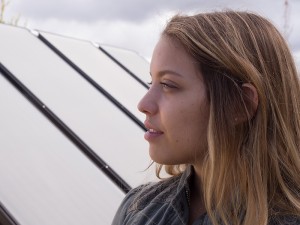De Anza College leads green trend: Solar panels, computerized weather station make education life based, inspirational
February 1, 2016
De Anza’s “green” buildings:


Shaylynn Graydon stands in the lobby in front of a flat panel screen. She’s looking at real-time data, charted like someone’s heartbeat. But this is not a hospital waiting room.
It’s the lobby of the Kirsch Environmental Center tucked into the southeast corner of the De Anza college campus. Graydon, 20, environmental studies major, observes the monitor displaying the amount of energy generated by the campus’ solar panels. What Graydon has learned is that those photovoltaic panels, her future and the future of other environmental studies students, are all part of a trend. This trend is touching the lives of people around the world and right here, at De Anza.
De Anza College’s “green” features
De Anza college’s 1.5-megawatt solar panel system generates enough electricity to power 246 homes year-round, and it is just one facet of the college’s commitment to environmental stewardship.
Most of the campus’ irrigation systemis now computerized and controlled by an on-campus weather station. The college is replacing most of its landscaping with drought-tolerant California native plants. It has six “green” buildings on campus, meaning that the buildings were constructed and are used with regards to energy use, water use, material selection and the building’s effects on its site area.
De Anza’s sustainability efforts created opportunities for students to gain a practical understanding of what they learn in the classroom. Classes in renewable energy and energy efficiency, wildlife sciences and pollution prevention benefit from the real world technologies and practices implemented on campus.
“With these systems on campus, I can actually see what I’m learning about in class,” Graydon said.
Making De Anza an environmentally sustainable place to learn became possible when local voters allocated $620 million to renovate and modernize the 48-year-old campus by approving Measures E in 1999 and C in 2006.
Increasing awareness
The rapid growth in enrollment in environmental studies and sciences classes shows greater environmental awareness. While enrollment for the college as a whole was flat in the most recently reported year, environmental studies enrollment jumped 71.8 percent during the same period.
“The college can’t create environmental classes fast enough,” said Bill Roeder, the environmental studies department’s energy management and building science instructor.
The popularity of environmental science classes could increase because of the job growth in the solar energy sector. The U.S. solar industry is creating jobs at a rate 12 times faster than the rest of the economy, according to the National Solar Jobs Census for 2015, published by the Solar Foundation.
“The need to create a workforce for this industry has never been greater,” Roeder said.
The global economy continues to move towards a more sustainable world. At De Anza, the green campus transformation is the responsibility of Donna Jones-Dulin, associate vice president of De Anza college.
“I think we have made great strides in our sustainability efforts and we will continue to work to try to reduce our carbon footprint,” Jones-Dulin said.
The source of inspiration
For students like Graydon, the campus represents a unique educational opportunity as she and her fellow students prepare for their future careers, and for Graydon personally her experience at De Anza was the main factor affecting her career choice.
“I wasn’t focused on sustainability as a career when I started,” she said. “I was just looking for a general education class to take.”
She changed her decision after taking environmental studies classes and expects to transfer to a four-year college next fall to complete her degree in environmental policy.
Observing real-time data from solar panels, Graydon has learned about the global sustainability trend. But the green features De Anza college has do more than just enhance students’ education. Graydon’s story is the example of the inspiration and personal change the features provoke, and it is a completely different, but not less important, facet of green trend.
